A measurement book is a vital document in civil engineering, especially in the construction industry. It is used to record all the measurements of work completed, materials received, and services rendered. The importance of accuracy in a measurement book cannot be overstated.
Accurate entries in the measurement book ensure that all transactions are traceable, helping avoid disputes and ensuring transparency.
In construction projects, accuracy and thorough record-keeping are essential. A well-maintained measurement book helps in ensuring that all measurements are precise, which directly impacts the payment process and project timelines.
For instance, incorrect measurements in an mb book in civil engineering can lead to financial discrepancies, causing delays and disputes between contractors and clients. Therefore, it’s crucial to follow the correct m book format to avoid such issues.
By maintaining a precise and thorough measurement book, the accuracy of work measurements is ensured, facilitating smooth financial transactions and protecting all parties involved in the project.
What Is Measurement Book?
Important Point
“Measurement Book” is an important Record Where measurements are recorded for the work done by the contractor, or for the materials received in the site or services rendered
MB belongs to the Division – and Can Be serially numbered Recording to whom issued, date of issue, etc. (DEE/ SDO). Contractor payments are made based on the measurements recorded in the Measurement Book.
It is considered very important accounts record and Preserved very carefully and Correctly and form substantial evidence in the court of law – If the need arises.
Measurements are written legibly in Order that transactions are readily traceable Recording of measurements. Each set of measurements should commence with entries.
Work Name as Given in The Estimate/Agreement
- Work location
- Contractors Name
- Work completion date
- Work commencement date
- Measurement recording date
- Agreement Number and date
Also, read: Building Estimation Step by Step In Excel Sheet
Format of Measurement Book
| Page No.:______ | |||||||
| Measurement Book | |||||||
| Name of village: | Name of work: | Name of activity: | |||||
| Period of work: | Date of measurement: | Daily wage rate: | |||||
| S.N. | Particular | No | Length | Width | Height | Quantity | Unit |
Measurement Book Key Terms
Add the explanations directly under the new subsection. Ensure the terms BOQ and RCC are bolded where appropriate, and integrate the keywords naturally within the text.
For example:
- BOQ (Bill of Quantities): This document is used in construction projects to list materials, labor, and costs. It’s crucial for accurate entries in the mb sheet format of the measurement book civil engineering.
- RCC (Reinforced Cement Concrete): This term refers to concrete reinforced with steel bars or mesh, which is essential in mb writing to ensure structural integrity.
Measurement Book Rules:
Accurate record-keeping is essential in the measurement book pwd. The measurement book rules should be strictly followed to ensure the integrity of the records.
The civil measurement book needs to be kept updated with precise measurements to avoid any disputes or errors. Each entry in the mb book format should adhere to these rules, ensuring consistency and accuracy throughout the project.
Also Read: Rate Analysis of Plastering Calculator
Procedure of Recording Measurement Book:
Measurement book is recorded at two different stages as per below:
- Progressive measurement:
- Final measurement:
1. Progressive Measurement
It is maintained in the completion of different stages of watershed activity or before each running payment of the watershed activity.
In this bill to be maintained monthly bill in the project. Because project work is longterm prosses. So, monthly payment release required monthly work progress of contractor requirement for working payment needs progressive measurements required.
The most important objective of maintaining progressive measurement would be for tracking the progress of work and the output signal of work against the payment made.
It is necessary to maintain the progressive measurement book in both cases whether the work is being implemented on a measurement basis or on a daily wage basis.
2. Final Measurement
It is a complete measurement of some physical intervention, which can be recorded in the time of completion of any physical intervention.
The most important objective of maintaining the final measurement would be to keep all the measurements in one place. With the help of the final measurement, actual work done may be compared with the estimate.
Measurement Book Industry Uses
The measurement book serves different purposes across various sectors of construction. In residential construction, the civil engineering measurement book is used to track and document small-scale projects such as housing developments, where precision in measuring areas like foundations and wall lengths is crucial.
In contrast, in commercial construction, the measurement book plays a pivotal role in documenting large-scale projects, such as office buildings and shopping complexes, where detailed records of materials and work progress are essential for managing the project budget and timelines.
The measurement bill format used in these different industries might vary slightly depending on the project scope, but the fundamental principles of accuracy and thorough record-keeping remain constant.
Measurement Book Common Mistakes
There are several common errors to avoid when using the pwd measurement book or m book in construction. One frequent mistake is the incorrect entry of measurements due to oversight or miscalculation, which can lead to significant issues later in the project.
Ensuring that all measurements are double-checked and verified before recording them in the measurement book format in excel is crucial.
Another common error is neglecting to update the measurement book form no 23 regularly, which can cause discrepancies between actual work done and recorded work. Consistent updates and reviews of the measurement book civil engineering pdf can prevent these issues.
Record Entry In Measurement Book (MB)
- First of all, write down the Date of Measurement taken.
- Item of BOQ is explained to understand that what is the measurement and from where it is taken.
- Serial Number of new measurements is written with the Item number of BOQ as shown in the above table. Because it tells us the new record serial and from where the same item is taken so that BOQ item serial number is useful for quick checking.
- Clearly mention the unit of measurement like
- Cubic meter or M3 or Cu.m. for volumetric measurements like excavation, concrete, etc.
- Square meter or Sq.m. or M2 for areal measurements like plastering work which has fixed depth etc.
- Meter or m for length measurement for standard or fixed-width items like pipeline etc.
- The total quantity of measurement is calculated on the same page, which is forwarded on the Abstract book.
Also Read: Rate Analysis of RCC
Tools for Measurement Books
For those working with a construction measurement book, several digital tools and software can assist in the measurement recording process. These tools can streamline the documentation and reduce errors in the m book in civil engineering.
Software like MS Excel offers customizable templates that align with the format of measurement book, making it easier to keep track of measurements.
Additionally, project management software such as AutoCAD can integrate with measurement books for more precise data recording. Providing links to these tools can help users improve the accuracy and efficiency of their measurement book in estimation.
Measurement Book Templates
To assist with various projects, downloadable templates for different types of measurement book are available. These templates are particularly useful for those who are new to maintaining a standard measurement book or need a starting point for their measurement book for civil works.
Offering a range of templates that cater to different needs – from simple residential projects to complex commercial builds – can ensure that users have the right format for their specific tasks.
These templates can be easily modified to suit the measurement book in estimation or measuring book requirements.
Also, read: How Does A Septic Tank Work
Measurement of Excavation as Per Drawing
Footing excavation work needs sum drawing like Footing location Drawing and Section Drawing. All drawing as per below, please see
Section A-A
Footing Location
In this plan, 11 footings as per drawing.
- Length = 0.6m + 1.0m + 0.6m = 2.20m
- Here 0.6 m is working space in footing for both sides.
- And,1.0 m = footing size
Also, read: What Is Slab Beam / Hidden Beam / Concealed Beam | Advantage and Disadvantage In this plan, 11 footings as per drawing. In this plan, 11 footings as per drawing. In this plan, 11 footings as per drawing. Section A-A Footing backfilling qty for 11 Qty Also, read, Rate Analysis of Brick Masonry
Measurement Book
Sr. No.
Item Description
No.
Length
(m)Widht/
Breadth
(m)Height/
Depth
(m)Quantity
Unit
1
Earthwork in Excavation in
Foundation:
Footing (1m x 1m)
11
2.200
2.200
1.580
84.12
Cu.m.
Depth From GL = 0.6 + 1 + 0.6
0.6 =Extra For working space
Total Qty=
84.12
Cu.m.
Measurement of Footing P.C.C. as Per Drawing
Measurement Book
Sr. No.
Item Description
No.
Length
(m)Widht/
Breadth
(m)Height/
Depth
(m)Quantity
Unit
2
Footing P.C.C.
Footing (1m x 1m)
11
1.300
1.300
0.075
1.39
Cu.m.
Thickness = 0.075
D = 0.150 + 1.0 + 0.150
Total Qty=
1.39
Cu.m.
Measurement of Footing R.C.C. as Per Drawing
Measurement Book
Sr. No.
Item Description
No.
Length
(m)Widht/
Breadth
(m)Height/
Depth
(m)Quantity
Unit
3
Footing R.C.C.
Base(1m x 1m)
11
1.000
1.000
0.450
4.95
Cu.m.
Thickness = 0.450
Total Qty=
4.95
Cu.m.
Also, read: Difference Between CPM and PERT/PERT Vs CPMMeasurement of Column up to Plinth Level R.C.C. as Per Drawing
Measurement Book
Sr. No.
Item Description
No.
Length
(m)Widht/
Breadth
(m)Height/
Depth
(m)Quantity
Unit
4
Column up to Plinth Level R.C.C.
Column
11
0.230
0.230
1.050
0.61
Cu.m.
Total Qty=
0.61
Cu.m.
Measurement of Backfilling as Per Drawing
Measurement Book
Sr. No.
Item Description
No.
Length
(m)Widht/
Breadth
(m)Height/
Depth
(m)Quantity
Unit
5
BackFilling
5.a
Backfilling In Footing
Excavation Area
11
2.200
2.200
1.580
84.12
Cu.m.
Deduction
Footing P.C.C.
-11
1.300
1.300
0.075
-1.39
Cu.m.
Footing R.C.C.
-11
1.000
1.000
0.450
-4.95
Cu.m.
Footing Column
-11
0.230
0.230
1.050
-0.61
Cu.m.
5.a Total Qty=
77.16
Cu.m.
5.b
Plinth Beam Backfilling
Plinth area out to out
1
10.240
7.690
0.600
47.25
Cu.m.
Deduction
L-1
-3
10.240
0.230
0.600
-4.24
Cu.m.
L-2
-4
3.000
0.230
0.600
-1.66
Cu.m.
L-3
-3
4.000
0.230
0.600
-1.66
Cu.m.
L-4
-1
1.500
0.230
0.600
-0.21
Cu.m.
L-5
-1
2.315
0.230
0.600
-0.32
Cu.m.
5.b Total Qty=
39.17
Cu.m.
5.a + 5.b Total Qty=
116.33
Cu.m.
Measurement of Plinth Beam R.C.C. as Per Drawing
Lintel Beam Calcution For RCC
As per lintel beam drawing, L-1 = 3 nos., L-2 = 4 nos., L-3 = 3 nos., L- 4 = 1 nos, L-5 = 1 nos of qty and length
and beam size = 0.230 m x 0.600 m
| Measurement Book | |||||||
| Sr. No. | Item Description | No. | Length (m) |
Widht/ Breadth (m) |
Height/ Depth (m) |
Quantity | Unit |
| 6 | Plinth Beam R.C.C. | ||||||
| Beam (230 mm x 600 mm) | |||||||
| L-1 | 3 | 10.240 | 0.230 | 0.600 | 4.24 | Cu.m. | |
| L-2 | 4 | 3.000 | 0.230 | 0.600 | 1.66 | Cu.m. | |
| L-3 | 3 | 4.000 | 0.230 | 0.600 | 1.66 | Cu.m. | |
| L-4 | 1 | 1.500 | 0.230 | 0.600 | 0.21 | Cu.m. | |
| L-5 | 1 | 2.315 | 0.230 | 0.600 | 0.32 | Cu.m. | |
| Total Qty= | 0.32 | Cu.m. | |||||
Measurement of Grae Slab RCC as Per Drawing
- Grae Slab RCC = ( Total Length x Total Breadth x Thickness ) – Column
- Grae Slab RCC = ( 10.240 x 7.690 x 0.100 ) – ( 11 x 0.230 x 0.230 x 0.100)
- Grae Slab RCC = ( 7.87 ) – (0.06)
- Grae Slab RCC = 7.82 Cu.m.
| Measurement Book | |||||||
| Sr. No. | Item Description | No. | Length (m) |
Widht/ Breadth (m) |
Height/ Depth (m) |
Quantity | Unit |
| 7 | Grae Slab R.C.C. | ||||||
| Plinth area out to out | 1 | 10.240 | 7.690 | 0.100 | 7.87 | Cu.m. | |
| Deduction | |||||||
| Column | -11 | 0.230 | 0.230 | 0.100 | -0.06 | Cu.m. | |
| Total Qty= | 7.82 | Cu.m. | |||||
Measurement of Grae Slab Column as Per Drawing
- Column Length & Breadth= 0.230 m
- Height = Ground Slab – Ground Floor – Slab Beam
- Height = 3 – 0 – 0.350 = 2.650 m
| Measurement Book | |||||||
| Sr. No. | Item Description | No. | Length (m) |
Widht/ Breadth (m) |
Height/ Depth (m) |
Quantity | Unit |
| 8 | Column Up to Slab Level R.C.C. | ||||||
| Column | 11 | 0.230 | 0.230 | 2.650 | 1.54 | Cu.m. | |
| Total Qty= | 1.54 | Cu.m. | |||||
Also, read: What Is Floating Slab
Measurement of Brick Masonry as Per Drawing
Plan
Elevation
Brick masonry calculation uses a Long wall and Short wall method
- All length as per drawing and height = 3.00 m – 0.35 m = 2.65 m.
| Measurement Book | |||||||
| Sr. No. | Item Description | No. | Length (m) |
Widht/ Breadth (m) |
Height/ Depth (m) |
Quantity | Unit |
| 9 | Brick Masonry | ||||||
| 230 mm thick wall Brick Masonry | |||||||
| Long Wall | 3 | 10.240 | 0.230 | 2.650 | 18.72 | Cu.m. | |
| Shot wall-1 | 3 | 3.000 | 0.230 | 2.650 | 5.49 | Cu.m. | |
| Shot wall-1 | 1 | 3.000 | 0.230 | 1.200 | 0.83 | Cu.m. | |
| Shot Wall-2 | 3 | 4.000 | 0.230 | 2.650 | 7.31 | Cu.m. | |
| Deduction | |||||||
| Column | -11 | 0.230 | 0.230 | 2.650 | -1.54 | Cu.m. | |
| Window W | -2 | 2.000 | 0.230 | 1.200 | -1.10 | Cu.m. | |
| Window W1 | -2 | 1.500 | 0.230 | 1.200 | -0.83 | Cu.m. | |
| Window W2 | -3 | 1.200 | 0.230 | 1.200 | -0.99 | Cu.m. | |
| Window W3 | -1 | 1.200 | 0.230 | 1.500 | -0.41 | Cu.m. | |
| Door o | -2 | 1.200 | 0.230 | 2.100 | -1.16 | Cu.m. | |
| Door D | -1 | 1.200 | 0.230 | 2.100 | -0.58 | Cu.m. | |
| Door D1 | -1 | 1.000 | 0.230 | 2.100 | -0.48 | Cu.m. | |
| Door MS | -1 | 2.000 | 0.230 | 1.200 | -0.55 | Cu.m. | |
| Vent | -1 | 0.900 | 0.230 | 0.600 | -0.12 | Cu.m. | |
| Vent V1 | -1 | 0.600 | 0.230 | 0.600 | -0.08 | Cu.m. | |
| Total Qty 230 mm Thick Wall= | 24.49 | Cu.m. | |||||
| 115 mm thick wall Brick Masonry | |||||||
| Bath Room | 1 | 1.500 | 0.115 | 2.650 | 0.46 | Cu.m. | |
| Passage wall | 1 | 2.315 | 0.115 | 2.650 | 0.71 | Cu.m. | |
| Deduction | |||||||
| Door D2 | -2 | 0.750 | 0.115 | 2.100 | -0.36 | Cu.m. | |
| Parapet Wall | |||||||
| Long Wall | 2 | 10.240 | 0.115 | 1.000 | 2.36 | Cu.m. | |
| Shot Wall | 2 | 7.460 | 0.115 | 1.000 | 1.72 | Cu.m. | |
| Total Qty 115 mm Thick Wall= | 4.87 | Cu.m. | |||||
Measurement of In Side Plaster as Per Drawing
Sum Note Point for deduction
- 0.5 sq.m. below section is a full deduction
- 0.5 sq.m. to 3.0 sq.m. between half deduction in area
- 3.0 sq.m above full deduction but add side pattas
| Measurement Book | |||||||
| Sr. No. | Item Description | No. | Length (m) |
Widht/ Breadth (m) |
Height/ Depth (m) |
Quantity | Unit |
| 10 | In Side Plaster | ||||||
| Bed Room | |||||||
| Long Wall | 2 | 4.000 | 3.000 | 24.00 | Sq.m. | ||
| Shot wall | 2 | 3.000 | 3.000 | 18.00 | Sq.m. | ||
| Deduction | |||||||
| Door D1 | -0.5 | 1.000 | 2.100 | -1.05 | Sq.m. | ||
| Window W2 | -0.5 | 1.200 | 1.000 | -0.60 | Sq.m. | ||
| Window W3 | -0.5 | 1.200 | 1.200 | -0.72 | Sq.m. | ||
| Kitchen + Dining | |||||||
| Long Wall | 2 | 4.000 | 3.000 | 24.00 | Sq.m. | ||
| Shot wall | 2 | 4.000 | 3.000 | 24.00 | Sq.m. | ||
| Deduction | |||||||
| Door O | -0.5 | 1.200 | 2.100 | -1.26 | Sq.m. | ||
| Window W2 | -1 | 1.200 | 1.000 | -1.20 | Sq.m. | ||
| Verandah | |||||||
| Long Wall | 2 | 3.000 | 3.000 | 18.00 | Sq.m. | ||
| Shot wall | 1 | 3.000 | 3.000 | 9.00 | Sq.m. | ||
| Shot wall | 1 | 3.000 | 1.200 | 3.60 | Sq.m. | ||
| Deduction | |||||||
| Door MS | -0.5 | 1.200 | 1.200 | -0.72 | Sq.m. | ||
| Door D | -0.5 | 1.200 | 2.100 | -1.26 | Sq.m. | ||
| Window W | -0.5 | 2.000 | 1.200 | -1.20 | Sq.m. | ||
| DRG. Room | |||||||
| Long Wall | 2 | 5.550 | 3.000 | 33.30 | Sq.m. | ||
| Shot wall | 2 | 4.000 | 3.000 | 24.00 | Sq.m. | ||
| Deduction | |||||||
| Door O | -1 | 1.200 | 2.100 | -2.52 | Sq.m. | ||
| Door D | -0.5 | 1.200 | 1.200 | -0.72 | Sq.m. | ||
| Window W | -0.5 | 2.000 | 1.200 | -1.20 | Sq.m. | ||
| Window W1 | -1 | 1.500 | 1.200 | -1.80 | Sq.m. | ||
| Bath Room | |||||||
| Long Wall | 2 | 1.500 | 3.000 | 9.00 | Sq.m. | ||
| Shot wall | 2 | 1.200 | 3.000 | 7.20 | Sq.m. | ||
| Deduction | |||||||
| Door D2 | -0.5 | 0.750 | 2.100 | -0.79 | Sq.m. | ||
| Vent V1 | -0.5 | 0.900 | 0.600 | -0.27 | Sq.m. | ||
| W.C. | |||||||
| Long Wall | 2 | 1.500 | 3.000 | 9.00 | Sq.m. | ||
| Shot wall | 2 | 1.000 | 3.000 | 6.00 | Sq.m. | ||
| Deduction | |||||||
| Door D2 | -0.5 | 0.750 | 2.100 | -0.79 | Sq.m. | ||
| Vent | -0.5 | 0.600 | 0.600 | -0.18 | Sq.m. | ||
| Passage | |||||||
| Long Wall | 2 | 2.320 | 3.000 | 13.92 | Sq.m. | ||
| Shot wall | 2 | 1.390 | 3.000 | 8.34 | Sq.m. | ||
| Deduction | |||||||
| Door D2 | -1 | 0.750 | 2.100 | -1.58 | Sq.m. | ||
| Door D1 | -1 | 1.000 | 2.100 | -2.10 | Sq.m. | ||
| Door O | -1 | 1.200 | 2.100 | -2.52 | Sq.m. | ||
| Total Qty In Side Plaster= | 208.89 | Sq.m. | |||||
Measurement of Out Side Plaster as Per Drawing
| Measurement Book | |||||||
| Sr. No. | Item Description | No. | Length (m) |
Widht/ Breadth (m) |
Height/ Depth (m) |
Quantity | Unit |
| 11 | Out Side Plaster | ||||||
| Front Side | 1 | 4.450 | 4.775 | 21.25 | Sq.m. | ||
| 1 | 3.230 | 2.180 | 7.04 | Sq.m. | |||
| Lintel W | 1 | 2.000 | 1.300 | 2.60 | Sq.m. | ||
| Deduction | |||||||
| Door MS | -0.5 | 1.200 | 1.200 | -0.72 | Sq.m. | ||
| Window W | -0.5 | 2.000 | 1.200 | -1.20 | Sq.m. | ||
| Back Side | 1 | 7.690 | 4.775 | 36.72 | Sq.m. | ||
| Lintel W 2 | 2 | 1.200 | 1.300 | 3.12 | Sq.m. | ||
| Deduction | |||||||
| Window W 2 | -1 | 1.200 | 1.000 | -1.20 | Sq.m. | ||
| Right Side | 1 | 10.240 | 4.775 | 48.90 | Sq.m. | ||
| Deduction | |||||||
| Window W | -0.5 | 2.000 | 1.200 | -1.20 | Sq.m. | ||
| Window W 3 | -0.5 | 1.200 | 1.200 | -0.72 | Sq.m. | ||
| Vent | -0.5 | 0.600 | 0.600 | -0.18 | Sq.m. | ||
| Vent V1 | -0.5 | 0.900 | 0.600 | -0.27 | Sq.m. | ||
| Left Side | 1 | 10.240 | 4.775 | 48.90 | Sq.m. | ||
| Deduction | |||||||
| Window W 1 | -1 | 1.500 | 1.200 | -1.80 | Sq.m. | ||
| Window W 2 | -0.5 | 1.200 | 1.000 | -0.60 | Sq.m. | ||
| Parapet Wall | |||||||
| Long Wall | 2 | 10.010 | 1.115 | 22.32 | Sq.m. | ||
| Shot Wall | 2 | 7.460 | 1.000 | 14.92 | Sq.m. | ||
| Total Out Side Plastet Qty = | 197.87 | Sq.m. | |||||
Measurement of Celling Plaster as Per Drawing
| Measurement Book | |||||||
| Sr. No. | Item Description | No. | Length (m) |
Widht/ Breadth (m) |
Height/ Depth (m) |
Quantity | Unit |
| 12 | Celling Plaster | ||||||
| Bed Room | 1 | 4.000 | 3.000 | 12.00 | Sq.m. | ||
| Kitchen + Dining | 1 | 4.000 | 4.000 | 16.00 | Sq.m. | ||
| Verandah | 1 | 3.000 | 3.000 | 9.00 | Sq.m. | ||
| DRG. Room | 1 | 5.550 | 4.000 | 22.20 | Sq.m. | ||
| Bath Room | 1 | 1.500 | 1.200 | 1.80 | Sq.m. | ||
| W.C | 1 | 1.500 | 1.000 | 1.50 | Sq.m. | ||
| Passage | 1 | 2.320 | 1.390 | 3.22 | Sq.m. | ||
| Total Out Side Plastet Qty = | 65.72 | Sq.m. | |||||
Measurement of In Out Side Plaster as Per Drawing
Slab Beam
Section
| Measurement Book | |||||||
| Sr. No. | Item Description | No. | Length (m) |
Widht/ Breadth (m) |
Height/ Depth (m) |
Quantity | Unit |
| 13 | Slab RCC | ||||||
| Slab Area | 1 | 10.240 | 7.690 | 0.100 | 7.87 | Cu.m. | |
| S-1 | 3 | 10.240 | 0.230 | 0.350 | 2.47 | Cu.m. | |
| S-2 | 4 | 3.000 | 0.230 | 0.350 | 0.97 | Cu.m. | |
| S-3 | 3 | 4.000 | 0.230 | 0.350 | 0.97 | Cu.m. | |
| S-4 | 1 | 1.500 | 0.230 | 0.350 | 0.12 | Cu.m. | |
| S-5 | 1 | 2.315 | 0.230 | 0.350 | 0.19 | Cu.m. | |
| Total RCC Slab Qty= | 12.59 | Cu.m. | |||||
Measurement of In Side Paint as Per Drawing
| Measurement Book | |||||||
| Sr. No. | Item Description | No. | Length (m) |
Widht/ Breadth (m) |
Height/ Depth (m) |
Quantity | Unit |
| 14 | In Side Paint | ||||||
| Bed Room | |||||||
| Long Wall | 2 | 4.000 | 3.000 | 24.00 | Sq.m. | ||
| Shot wall | 2 | 3.000 | 3.000 | 18.00 | Sq.m. | ||
| Bed Room Ceiling | 1 | 4.000 | 3.000 | 12.00 | Sq.m. | ||
| Deduction | |||||||
| Door D1 | -1 | 1.000 | 2.100 | -2.10 | Sq.m. | ||
| Window W2 | -1 | 1.200 | 1.000 | -1.20 | Sq.m. | ||
| Window W3 | -1 | 1.200 | 1.200 | -1.44 | Sq.m. | ||
| Kitchen + Dining | |||||||
| Long Wall | 2 | 4.000 | 3.000 | 24.00 | Sq.m. | ||
| Shot wall | 2 | 4.000 | 3.000 | 24.00 | Sq.m. | ||
| Kitchen + Dining Celling | 1 | 4.000 | 4.000 | 16.00 | Sq.m. | ||
| Deduction | |||||||
| Door O | -1 | 1.200 | 2.100 | -2.52 | Sq.m. | ||
| Window W2 | -2 | 1.200 | 1.000 | -2.40 | Sq.m. | ||
| Verandah | |||||||
| Long Wall | 2 | 3.000 | 3.000 | 18.00 | Sq.m. | ||
| Shot wall | 1 | 3.000 | 3.000 | 9.00 | Sq.m. | ||
| Shot wall | 1 | 3.000 | 1.200 | 3.60 | Sq.m. | ||
| Verandah Celling | 1 | 3.000 | 3.000 | 9.00 | Sq.m. | ||
| Deduction | |||||||
| Door MS | -1 | 1.200 | 1.200 | -1.44 | Sq.m. | ||
| Door D | -1 | 1.200 | 2.100 | -2.52 | Sq.m. | ||
| Window W | -1 | 2.000 | 1.200 | -2.40 | Sq.m. | ||
| DRG. Room | |||||||
| Long Wall | 2 | 5.550 | 3.000 | 33.30 | Sq.m. | ||
| Shot wall | 2 | 4.000 | 3.000 | 24.00 | Sq.m. | ||
| DRG. Room Ceiling | 1 | 5.550 | 4.000 | 22.20 | Sq.m. | ||
| Deduction | |||||||
| Door O | -2 | 1.200 | 2.100 | -5.04 | Sq.m. | ||
| Door D | -1 | 1.200 | 1.200 | -1.44 | Sq.m. | ||
| Window W | -1 | 2.000 | 1.200 | -2.40 | Sq.m. | ||
| Window W1 | -2 | 1.500 | 1.200 | -3.60 | Sq.m. | ||
| Bath Room | |||||||
| Long Wall | 2 | 1.500 | 3.000 | 9.00 | Sq.m. | ||
| Shot wall | 2 | 1.200 | 3.000 | 7.20 | Sq.m. | ||
| Bath Room Ceiling | 1 | 1.500 | 1.200 | 1.80 | Sq.m. | ||
| Deduction | |||||||
| Door D2 | -1 | 0.750 | 2.100 | -1.58 | Sq.m. | ||
| Vent V1 | -1 | 0.900 | 0.600 | -0.54 | Sq.m. | ||
| W.C. | |||||||
| Long Wall | 2 | 1.500 | 3.000 | 9.00 | Sq.m. | ||
| Shot wall | 2 | 1.000 | 3.000 | 6.00 | Sq.m. | ||
| W.C Celling | 1 | 1.500 | 1.000 | 1.50 | Sq.m. | ||
| Deduction | |||||||
| Door D2 | -1 | 0.750 | 2.100 | -1.58 | Sq.m. | ||
| Vent | -1 | 0.600 | 0.600 | -0.36 | Sq.m. | ||
| Passage | |||||||
| Long Wall | 2 | 2.320 | 3.000 | 13.92 | Sq.m. | ||
| Shot wall | 2 | 1.390 | 3.000 | 8.34 | Sq.m. | ||
| Passage Celling | 1 | 2.320 | 1.390 | 3.22 | Sq.m. | ||
| Deduction | |||||||
| Door D2 | -2 | 0.750 | 2.100 | -3.15 | Sq.m. | ||
| Door D1 | -2 | 1.000 | 2.100 | -4.20 | Sq.m. | ||
| Door O | -2 | 1.200 | 2.100 | -5.04 | Sq.m. | ||
| Total Qty In Side Plaster= | 252.14 | Sq.m. | |||||
Measurement of Out Side Plaster as Per Drawing
| Measurement Book | |||||||
| Sr. No. | Item Description | No. | Length (m) |
Widht/ Breadth (m) |
Height/ Depth (m) |
Quantity | Unit |
| 15 | Out Side Plaster | ||||||
| Front Side | 1 | 4.450 | 4.775 | 21.25 | Sq.m. | ||
| 1 | 3.230 | 2.180 | 7.04 | Sq.m. | |||
| Lintel W | 1 | 2.000 | 1.300 | 2.60 | Sq.m. | ||
| Deduction | |||||||
| Door MS | -1 | 1.200 | 1.200 | -1.44 | Sq.m. | ||
| Window W | -1 | 2.000 | 1.200 | -2.40 | Sq.m. | ||
| Back Side | 1 | 7.690 | 4.775 | 36.72 | Sq.m. | ||
| Lintel W 2 | 2 | 1.200 | 1.300 | 3.12 | Sq.m. | ||
| Deduction | |||||||
| Window W 2 | -1 | 1.200 | 1.000 | -1.20 | Sq.m. | ||
| Right Side | 1 | 10.240 | 4.775 | 48.90 | Sq.m. | ||
| Deduction | |||||||
| Window W | -1 | 2.000 | 1.200 | -2.40 | Sq.m. | ||
| Window W 3 | -1 | 1.200 | 1.200 | -1.44 | Sq.m. | ||
| Vent | -1 | 0.600 | 0.600 | -0.36 | Sq.m. | ||
| Vent V1 | -1 | 0.900 | 0.600 | -0.54 | Sq.m. | ||
| Left Side | 1 | 10.240 | 4.775 | 48.90 | Sq.m. | ||
| Deduction | |||||||
| Window W 1 | -2 | 1.500 | 1.200 | -3.60 | Sq.m. | ||
| Window W 2 | -1 | 1.200 | 1.000 | -1.20 | Sq.m. | ||
| Parapet Wall | |||||||
| Long Wall | 2 | 10.010 | 1.115 | 22.32 | Sq.m. | ||
| Shot Wall | 2 | 7.460 | 1.000 | 14.92 | Sq.m. | ||
| Total Out Side Plastet Qty = | 191.18 | Sq.m. | |||||
Measurement Book PWD
The measurement Book is a most important record. It is the basis of all accounts of quantities of work done, purchase made and it must contain such a complete record of facts as to be conclusive evidence in court of law.
What is a Measurement Book?
A Measurement Book (MB) is an essential record where measurements of work done by a contractor, materials received, or services rendered are noted. It is crucial for making contractor payments and serves as legal evidence if needed.
How are measurements recorded in a Measurement Book?
Measurements are recorded progressively during different work stages and finalized upon completion. Each entry includes detailed specifics about the work and associated BOQ items.
What is the importance of a Measurement Book in construction?
It ensures accurate record-keeping of work progress and material usage, serving as the basis for contractor payments and legal documentation.
How should entries be made in a Measurement Book?
Entries should be clear, precise, and dated, detailing the work done, materials used, and quantities measured, with no alterations or overwriting allowed.
What are some common errors in Measurement Book entries?
Common errors include incorrect measurements, lack of detail, overwriting, and not following the prescribed format.
Like this post? Share it with your friends!
Suggested Read –
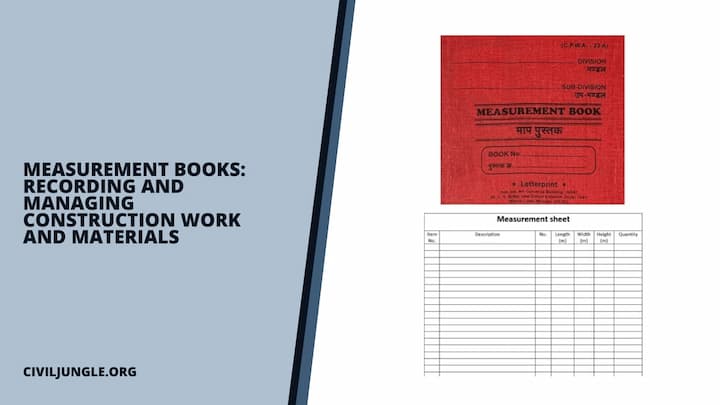
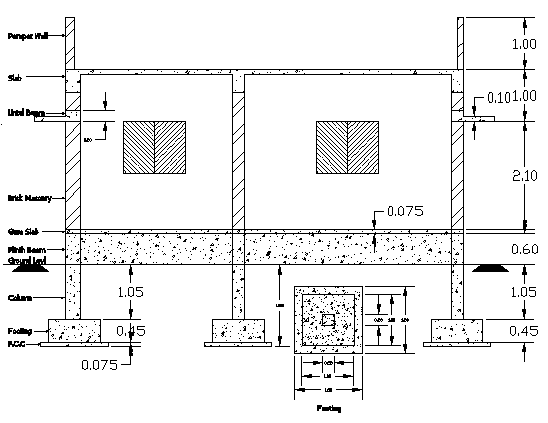
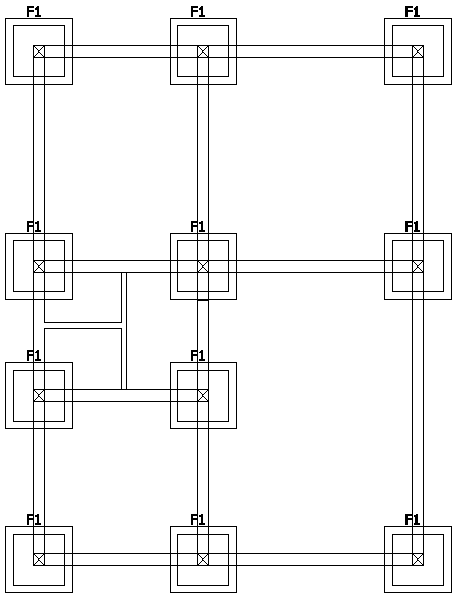
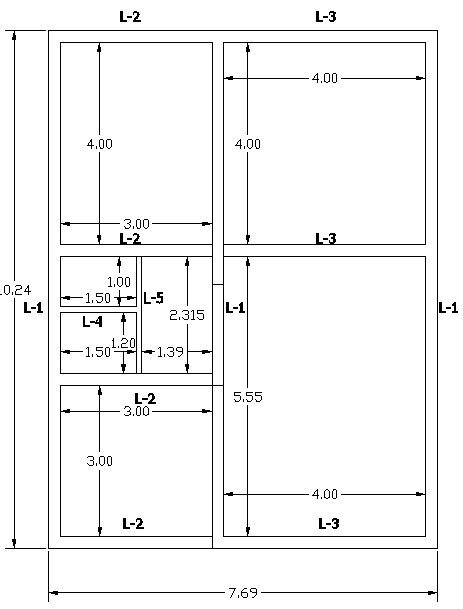

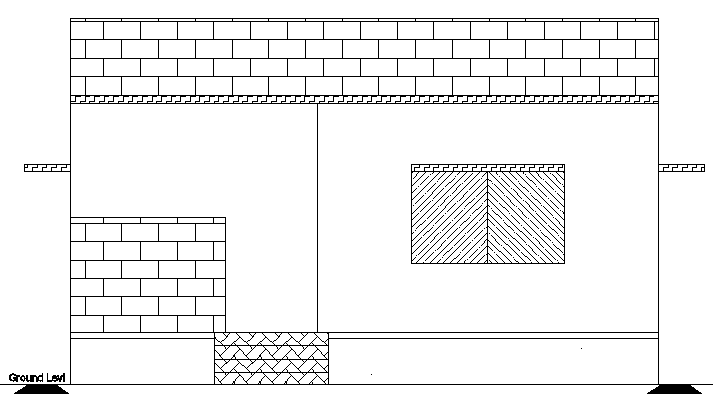
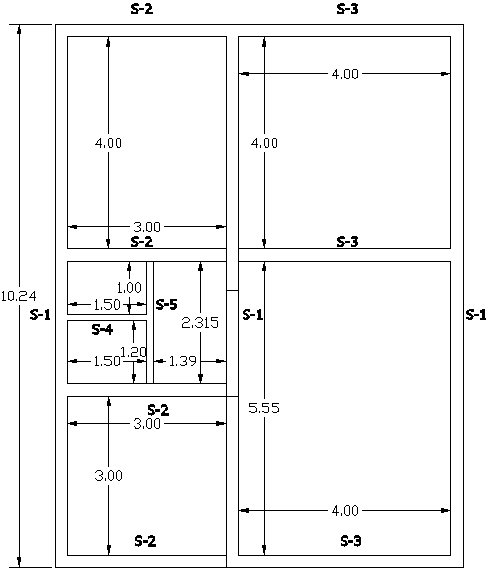

Leave a Reply